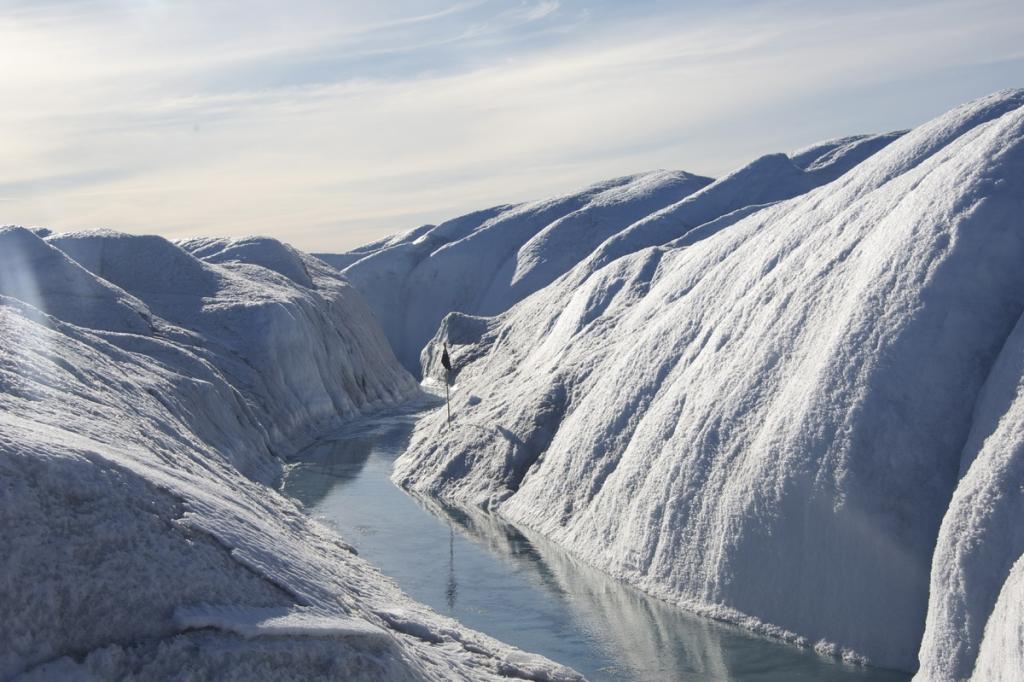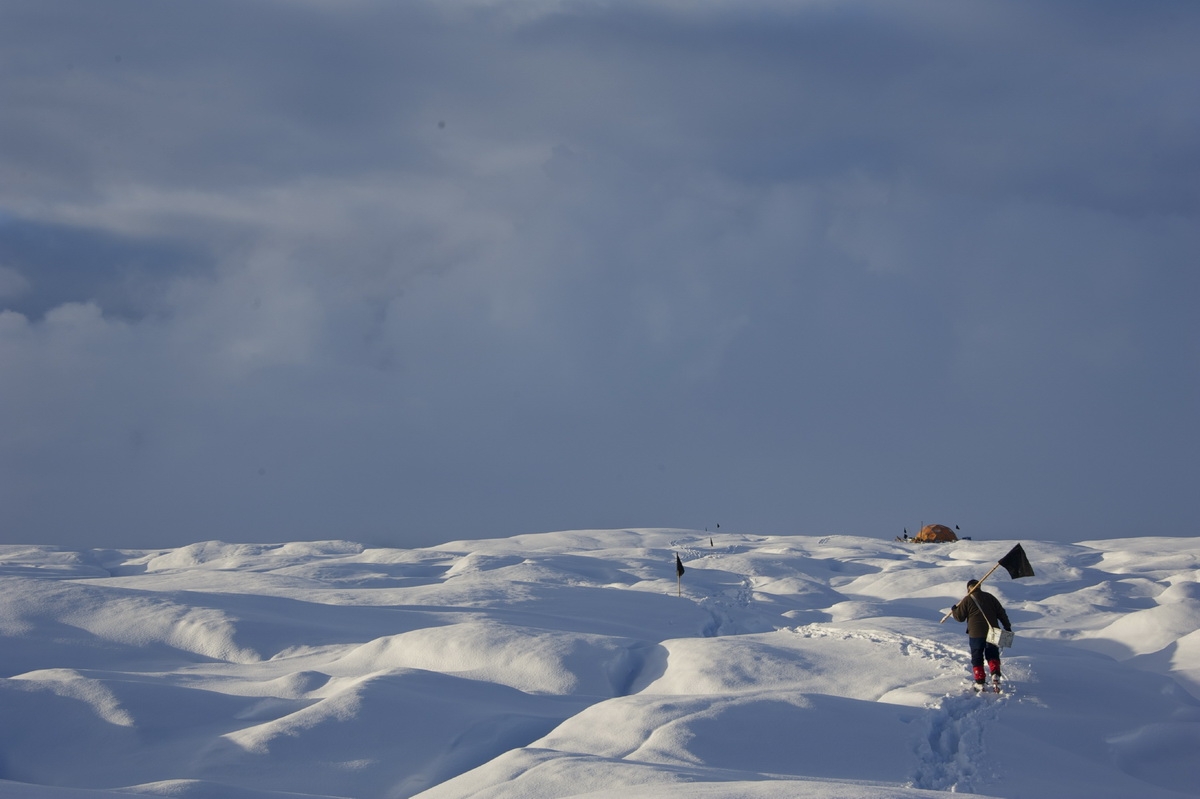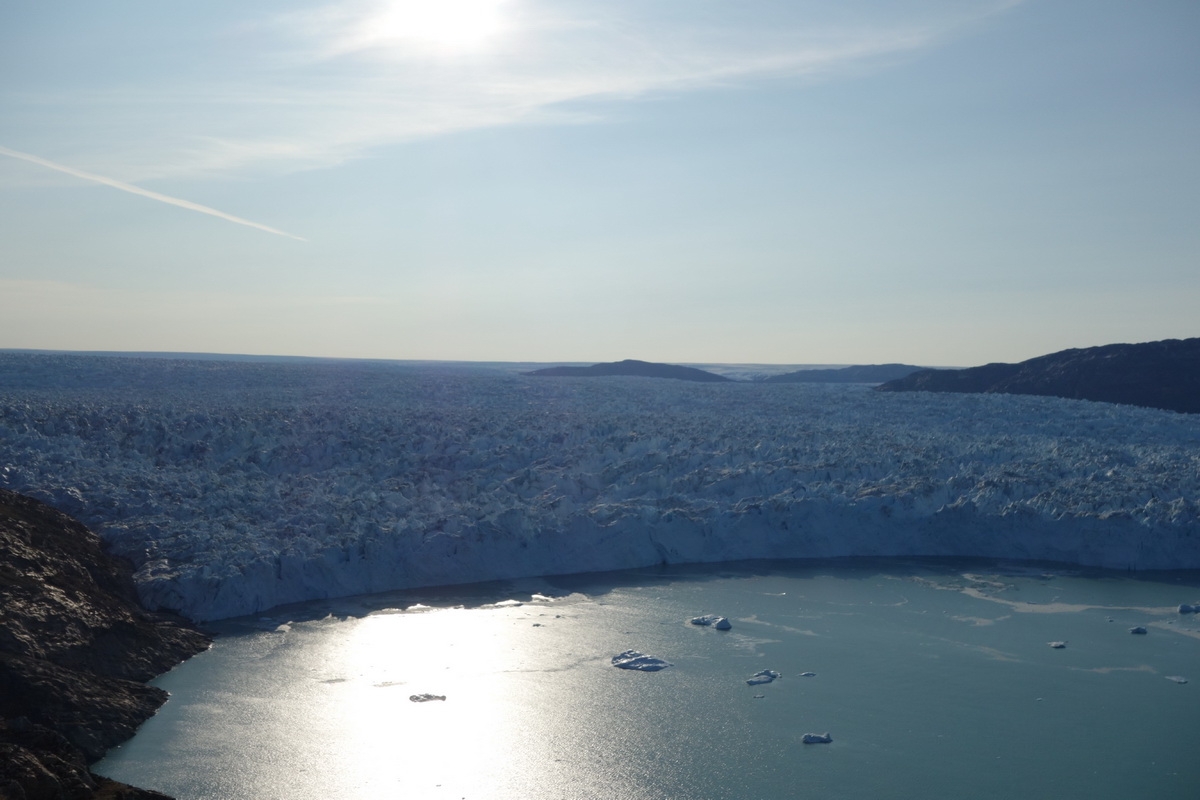New measurements indicate greater mass loss from Greenland ice sheet than previous thought
September 27, 2016 Amount of annual ice loss actually 272 Giga tonsThe loss of ice mass from the Greenland ice sheet is greater than previously thought, says a team of international researchers. According to them, the uplift of the bedrock (called glacial isostatic adjustment) had not been correctly taken into account when the glaciers’ mass balance was measured by satellite previously. This means that the amount of annual ice loss was actually 272 Giga tons (Gt) from 2004 to 2015, instead of the previously calculated amount of 253 Gt. Their results of their study has been published in the Science Advances journal.
Such glacial isostatic uplifting is well known. For example, in Scandinavia, some 20,000 years ago, the ice sheet extended over the Baltic Sea to present-day Germany. It was more than a kilometre thick. Similarly, Greenland was covered by much more ice in the past, and this caused the lithosphere to be pressed downwards.
Today, this process has been reversed and the ice sheet has risen up again. The uplift rate depends on the thickness of the ice mass and the properties of the lithosphere and mantle. However, it is here that models of those times were inaccurate, as they did not take into account Greenland’s geological past: The portion of the Earth’s crust above Greenland had passed over a hotspot in the mantle some 40 million years ago. As a result, the lithosphere beneath Greenland thinned and got warmer.
Today, Iceland, with its volcanoes and hot springs, is right above this very hotspot. For the first time, the measurement of the uplift was made possible by a network of GPS observation points implanted directly into the bedrock by Associate Professor Shfaqat A Khan (of the Technical University of Denmark) and his team, in the harsh terrain.
They also monitored the observation points regularly. As a result, they were able to prove that the uplift rate was significantly higher than in previous calculations. They also detected a much larger amount of ice loss since the last ice age: Where it was estimated that the melting Greenland ice sheet had caused a 3.2 metre rise in sea level over the last 20,000 years, the new study yielded a higher amount at about 4.6 metres. The researchers had also discovered much discrepancy between the earlier estimates and actual measurements in the northwestern and southeastern region of Greenland.
It is likely that the climate sensitivity there is higher than previously thought, as the glaciers in these areas mostly carve directly into the ocean, and these regions have the most loss of ice mass. The researchers anticipate that the dwindling ice would contribute greatly to increased sea levels in the coming centuries.
Link to study



